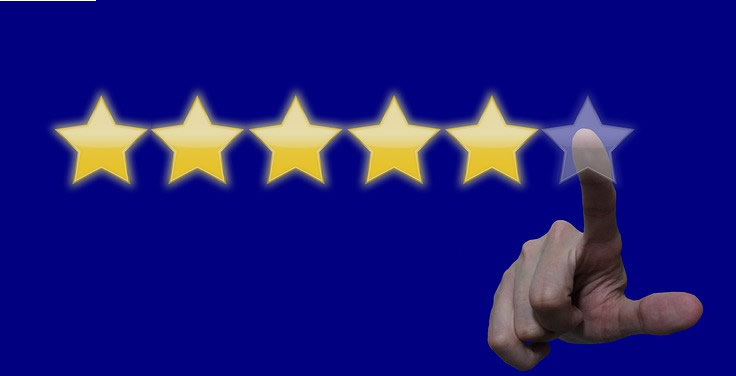Managing To Meet The Needs Of The Future
So, for years I have worked in workforce and talent development. I pride myself on innovative and progressive approaches to supporting the workforce, because I understand the true potential of having the right skills in the right place. Our world is shifting, and like or not it is because of the millennials that having conversations about not only what employers should expect from their employees, but also what employees should expect from their employers. It is incredibly important that employees be dedicated, hardworking, and ethical. This allows them to do the best job they can, whether or not someone is watching them. However, it is really up to the employers to create an environment that fosters that level of professionalism, and it allows for employees to feel valued when they do. Often when I speak to employers who have issues with turnover and who can’t retain top talent, they often state that they are frustrated by people leaving. My two most common questions are: “What are you doing to make them stay?” and “Are you aware that most people don’t leave their job, they leave their boss?”
On that note, let’s look at how we can create an environment that will promote professionalism and give our employees a reason to say.
Maximize The Talent You Have
According to a 2018 Harvard Business Review article, titled Why People Really Quit Their Jobs, people would leave when their job wasn’t enjoyable, their strengths weren’t being used, and they weren’t growing in their careers. Even when they enjoyed their boss, they still didn’t enjoy their job, but it is their boss who ultimately is responsible for what that job is like. The elements of enjoying what you do and growing in your career, are really about utilizing your skills. No matter what we do, we want to be able to spend most of our time doing what we are good at and ideally be appreciated for our skills. This needs to be a focal point when managing a team. Look to capitalize on the skills and talents of those in your charge, to get the most out of the investment that you have made into your hiring.
This can look different for different organizations, when you have a large employee base it needs to be done in broader strokes but is best done by being open to strategies like Job Carving. Job Carving is commonly defined as; the act of analyzing work duties performed in a given job and identifying specific tasks that might be assigned to an employee. This is most commonly used to intergrade people with disabilities but can be used for everyone. It is about adjusting scheduling, recombining duties, and generally taking a more fluid approach to creating job descriptions. In smaller organizations, you can inventory the skills and abilities of your existing staff team and look to adjust tasks and roles to take a more strengths-based approach to team dynamics. Both of these strategies, job carving and strength base teams, require a very strong and progressive HR approach and leaders skilled in change management, but can be a turning point for companies with workforce issues.
Lead Vs Manage
If you are going to create a culture to maximize your workforce, run an organization that people will bring their best to, and retain talent; then you need to understand how to lead, instead of just how to manage
Here are some places to start:
Employees are your ASSET
Old thinking has always been that employees are your biggest cost, your biggest risk, and sometimes, your biggest liability. This creates an adversarial perspective to managing staff. What owners, bosses, and managers need to understand is that the Human Capital of a business is the biggest investment and therefore the greatest priority to optimize.
Open communication flow
Old thinking about communications has been to focus on the top-down chain. You need to be fed information from your superiors who possess all of the access, insight, and required intel. But this shows a lack of respect or the professional judgment of your employees, creates a bottleneck for information, and slows down productivity. By allowing information to be accessible and shared throughout, you are fostering independence in your team and empower those with the initiative to act.
Behaviour over Experience
Old thinking valued experience as the be all end all, you had to be proven to be effective. However, when you hire for experience you’re hiring someone’s past, which might be all they can give you. If you focus on the behaviour, or as we call it in workforce development their employability skills, you can expect more, develop more, and invest more in your staff.
Empower results
Old thinking puts a lot of emphasis on punching the clock. The thinking put a lot of focus on how much time you put in between 9 to 5. But the question you need to ask yourself is what are you paying them for? Is it to be busy within their working hours or to produce results and meet outcomes? You can either give your staff the flexibility they need to deliver or give them a schedule to work, you likely cannot do both.
Work where the best work gets done
In line with the last section, Old thinking emphasizes sitting at your desk from 9-5, anything else isn’t really working. But, the essential point to consider is, what are you paying your staff for? It is to occupy a desk or to produce results and meet outcomes? If the conditions of the job will allow for the flexibility of working remotely or part-time from home offices, and people can produce better results outside the office, then why not? You can either give your staff the flexibility they need to deliver the best results or give them a mandatory location to work, you likely cannot do both.
Genuine honesty
Old thinking puts a lot of value on corporate jargon and buzzwords, often to pacify people’s needs for information without actually giving it to them. We often hide behind these efforts to pacify our employees out of some antiquated thoughts that employees are like mushrooms, they develop better when kept in the dark (often surrounded by bul….oney…..baloney). When in reality the best way to develop your team is to be genuine, transparent, and trust them with what they need to do their jobs the best they can.
Fail often
Old thinking really hates the idea of failing and wants to go to any length to avoid it. But failing is essential to growth. If you never try anything new, you are unlikely to fail…..and succeed, and grow, and innovate. But if you look for calculated ways to take risks then you are open to fail….and succeed, and grow, and innovate.
Be vulnerable
Old thinking embodies the omnificent leader who is to be feared and respected by all, and that might have worked for Julius Caesar, that is not how true leadership is. Real leadership and successful management are about having the confidence to laugh at yourself, make own your mistakes, say “I don’t know”, and ask others for help. A leader who can inspire people by being human and an equal to their staff will create a loyalty and work ethic that will surpass any threat, fear, or power that old thinking can muster up.
The Takeaway
No one wants to be managed, but we all want to be lead. A manager who follows the old thinking of management will always have workforce issues, limited innovation, and get satisfactory results. A leader who looks to inspire, empower, and develop their team will outpace, outshine, and outdo any manager every day of the week. Do you want to give your team a reason to stay? Give them the boss they never want to leave.
– Written by W. Coby Milne
Director of Roman 3 Operations
Roman 3 is an advising and solutions firm that specializes in inspiring progressive action, creating a culture of innovation, and assisting organizations in implementing transformative change. We help you build capacity, collaborate, be progressive, and grow to your full potential. For more information on our services and support check us out at www.roman3.ca






